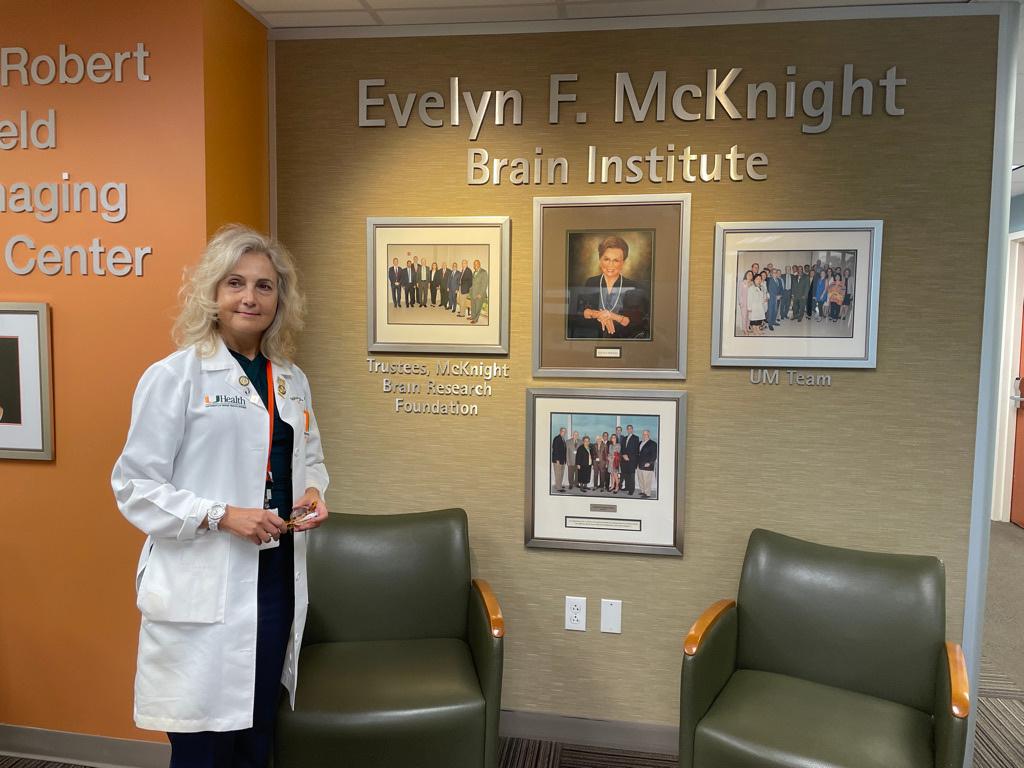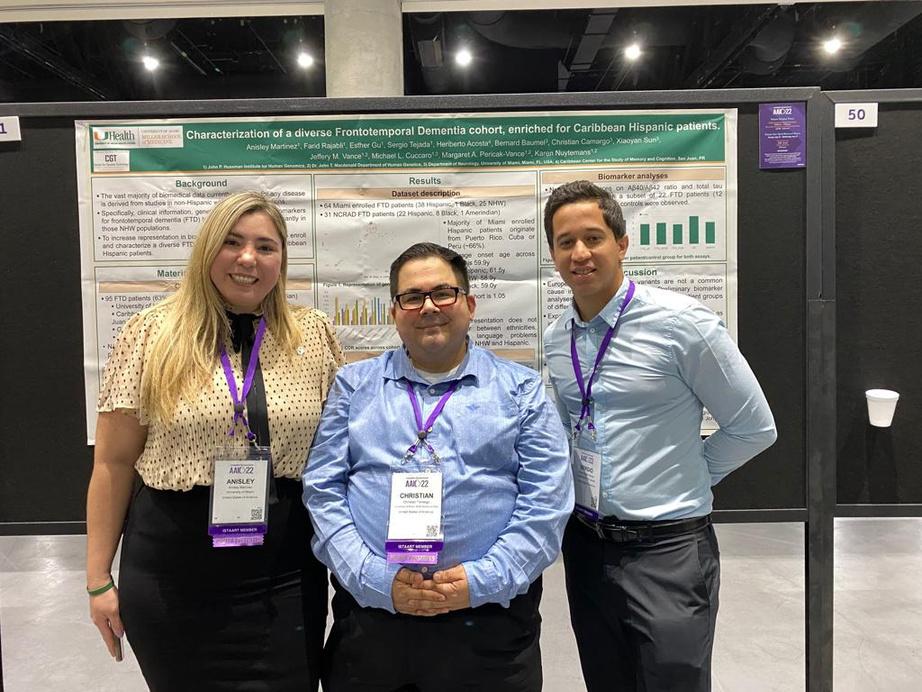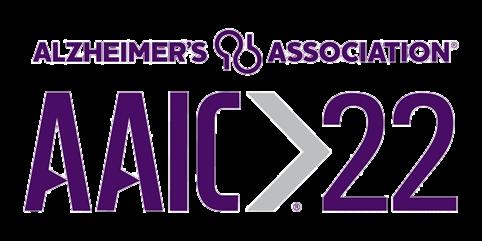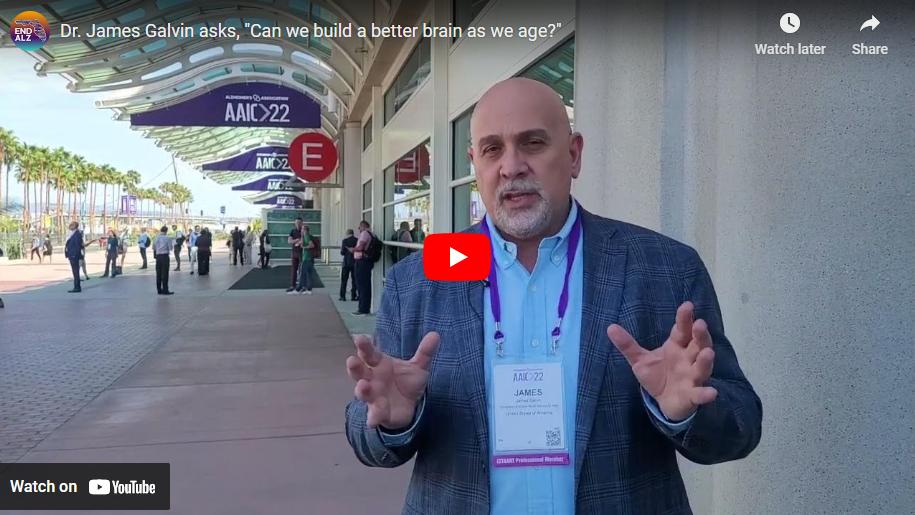
2 minute read
A P P E N D I X 4
University of Miami Researchers on the Forefront of Alzheimer's and Dementia Research



Miller School Researchers Present High-impact Findings at World’s Largest Dementia Research Conference


By Lisette Hilton
Alzheimer’s and dementia experts with the University of Miami Miller School of Medicine presented on impactful research, including unique tools for early detection of cognitive decline and dementia, Alzheimer’s Disease genetic sequencing and much more at the recent 2022 Alzheimer’s Association International Conference (AAIC) in San Diego Miller School researchers contributed over 2 dozen presentations on a broad spectrum of topics at 2022 AAIC, the world's largest and most influential dementia research conference


An article published in the University of Miami INVENTUM and Research, Education & Medical News highlighted our EMBI researchers. Segments from the article are included below.


Tatjana Rundek, M.D., Ph.D., professor of neurology, and scientific director of the Miller School's Evelyn F McKnight Brain Institute, and her Miller School team presented on the role of combined neuroimaging markers in cognitive decline and dementia “We have shown that MRI markers of white matter disease and ultrasound markers of atherosclerotic plaque in the carotid arteries are important predictors of cognitive decline beyond traditional vascular risk factors such as hypertension, diabetes, and hyperlipidemia,” Dr Rundek said “Their effect was consistent across different racial and ethnic groups ” Future research on these markers’ impact on could lead to interventions aimed at reducing the risk of future cognitive decline.
James Galvin, M.D., M.P.H., director of the Comprehensive Center for Brain Health and professor of neurology at the Miller School, presented research focused on early detection of cognitive impairment and understanding how risk and resilience factors explain differences in vulnerability to developing AD and related disorders across racial, ethnic and cultural groups. “While all physicians can diagnose mild cognitive impairment and AD and related disorders, the fact is that in the U.S. most diagnoses are not made until later stages of disease,” Dr. Galvin said. A key challenge with Alzheimer’s disease, he said, is that it’s difficult to assess a person’s brain health at the first visit and determine who is at risk and in need of a more extensive evaluation
William Keith Scott, Ph.D., executive director of the University of Miami Brain Endowment Bank, said his students presented two posters on their Ph D research projects One was research showing that the number of corpora amylacea (a circular structure that contains various waste products from cells) is associated with specific brain changes in people with AD Another poster highlighted work showing that inherited genetic variation in the mitochondrial genome may be associated with risk of dementia in Amish communities in Indiana and Ohio, and that this risk might be different in men and women “The volume of research being conducted on biomarkers, early detection, and longitudinal follow-up of cognitive impairment was overwhelming, and an indicator of how quickly that part of the field is developing,” Dr. Scott said.
Regina Vontell, Ph.D., assistant professor of neurology and associate director of the University of Miami Brain Endowment Bank, presented research focused on early detection of neurodegenerative changes seen in AD. “Our presentation investigated an important biomarker, neurogranin, which is detected in individuals with AD cognitive disorder. Our research shows that this protein is lost in specific regions in the brain’s hippocampus as the disease progresses We also show that there are structural changes to the neurons and the surrounding white matter in specific hippocampal regions,” Dr Vontell said
Lilah M. Besser, Ph.D., M.S.P.H., research assistant professor at the Comprehensive Center for Brain Health at the Miller School, said her team presented a literature review of published articles looking at associations between neighborhood greenspace exposure and AD and related dementia outcomes “Our goal as scientists was to determine the extent that studies included diverse racial/ethnic groups, the diversity of the studies’ geographic locations, and whether evidence suggests differences in associations depending on racial/ethnic group,” Dr. Besser said. The Miller school researchers found that nearly threequarters of studies found at least one positive association, such that individuals living in neighborhoods with more greenspace demonstrated better brain health outcomes.







